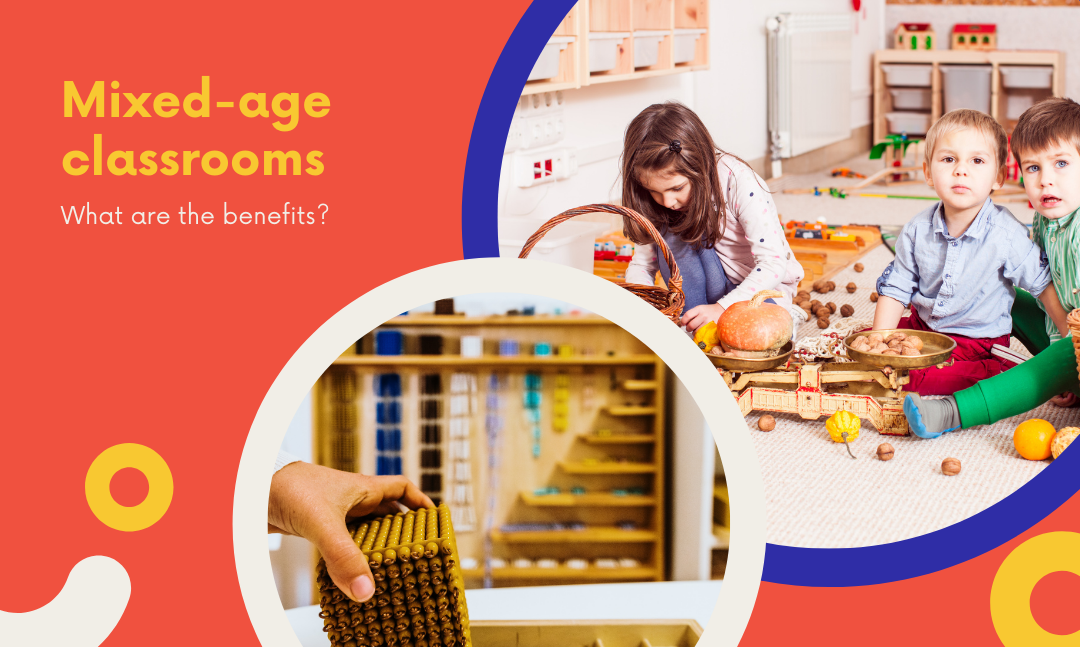One of the most apparent differences between Montessori environments and traditional American classrooms is the way students are grouped. In traditional schools, students are grouped with peers of the same age, while Montessori environments are composed of students within an age range.
Montessori classrooms are typically larger in both size and student population than traditional classrooms. At the Maria Montessori School, our primary environments have approximately 30 children ranging in age from 4 to 6. The classroom is large and allows children to explore and discover varied materials that are placed throughout the environment.
When parents with traditional public or private school backgrounds tour a Montessori school, this is one of the most evident differences. It can be strange to see a 4-year-old working through material with a 6-year-old child. But combining ages in this way is intentional, and it benefits our children in a number of ways.
Children can learn at a more natural pace.
In a one-year, one-grade model of education, students have to hit academic milestones across subjects to advance to the next grade. Children, especially younger children, may need more time to develop an understanding of concepts than a school year allows. Montessori classrooms allow students to explore subjects at their own pace, taking time on those that require more dedicated focus and working more quickly on those that are naturally interesting. In a classroom with mixed ages, students will see varied levels of understanding and proclivities among their peers, noting that all students are exploring the classroom differently and in a way that meets their needs. This prevents discouragement and allows the child to feel comfortable exploring materials regardless of their age or understanding.
Children can learn by watching their peers.
If you’ve ever spent time with a toddler, you know that children model behavior. They watch adult actions and repeat them at relative frequency. The same is done in Montessori environments among peers. Older students naturally set examples for younger students to follow. From classroom procedures to using the materials to understand concepts, younger students in the environment watch older children closely for learning cues.
Children can learn to build community.
In your work setting, how many of your coworkers are within one year of your age? You likely work with people of different ages, different skill sets and varied interests. The mixed-age classrooms within a Montessori school mimic the real world. Students learn to build relationships with students older and younger than themselves, creating a cohesive community. As students move to the next environment, they are reunited with peers they learned with in the past and still have friends in their previous environment. This builds an interconnectivity that does not always exist in schools with one-year, one-grade systems. The ability to harmoniously work alongside people of varied ages is cultivated in children at a young age and follows them throughout their life.

